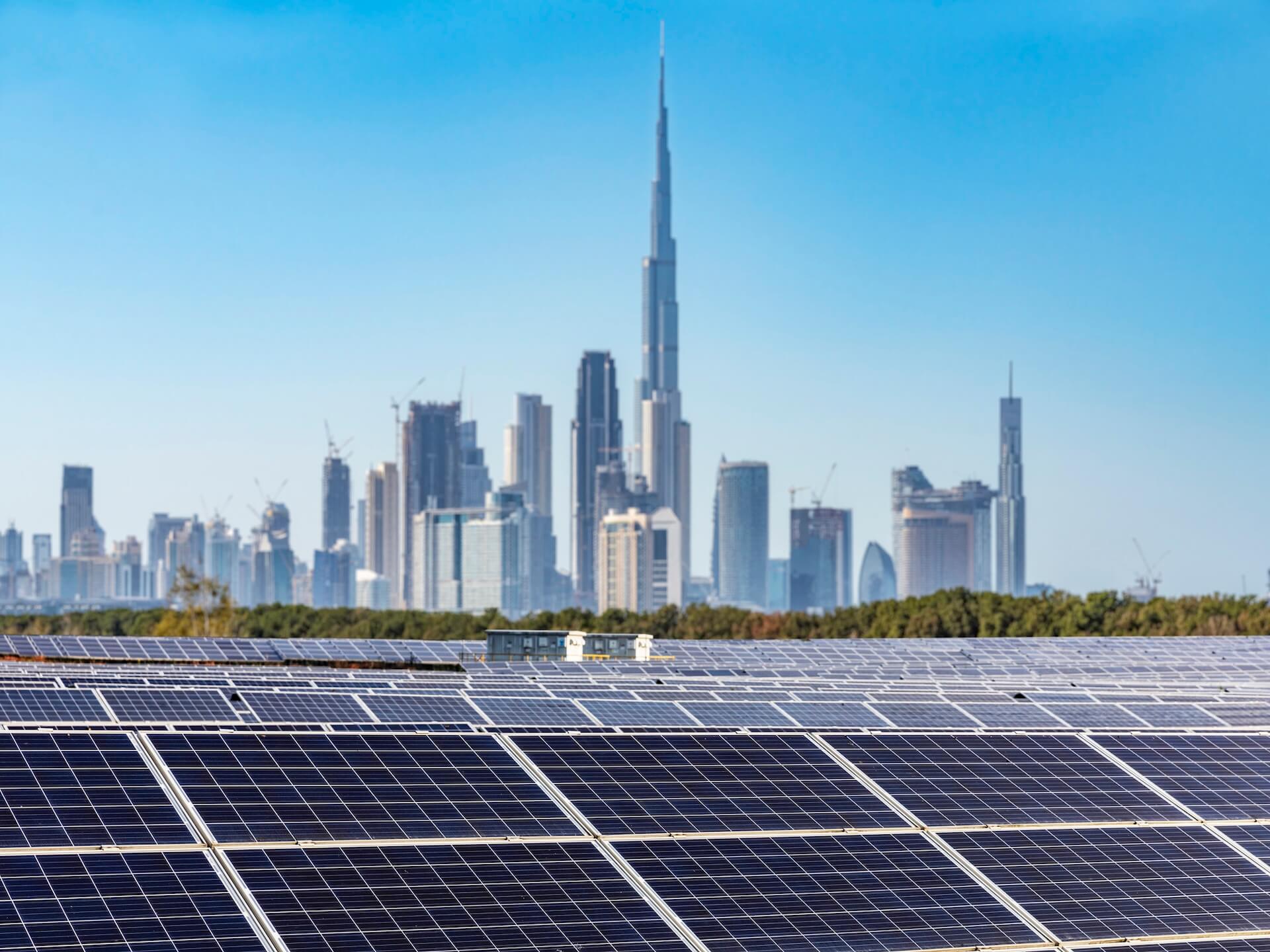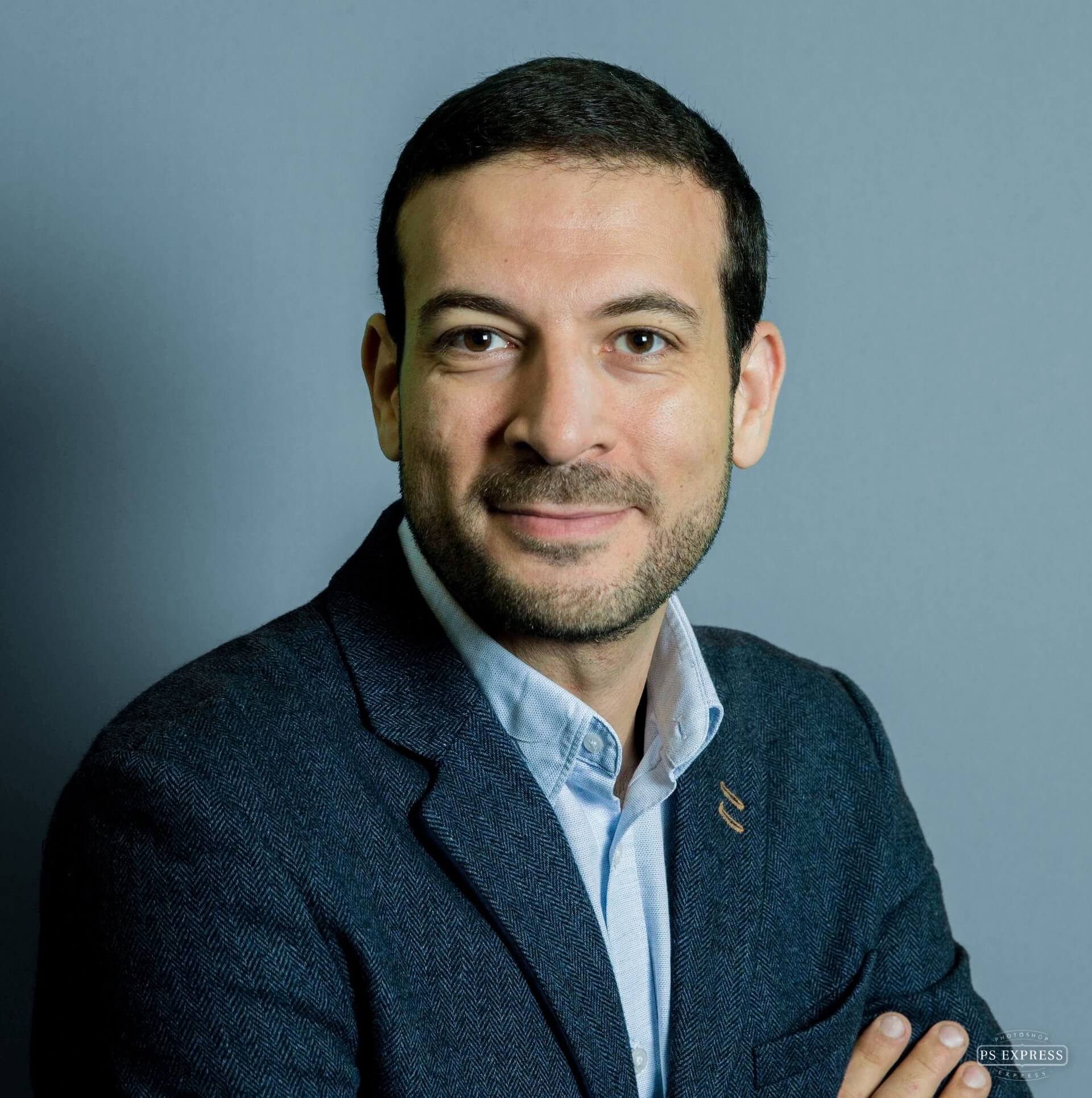G20 and the energy revolution: solar and wind power are the sustainable initiatives of the Middle East
The second article in the series “Energy Transitions: Pathways to a Sustainable World” reveals data on the energy mix and nuances among countries in the Middle East, an oil producing and exporting region. The series provides an overview of energy transitions in guest and member countries of the G20, reinforces the theme's importance, and unveils challenges and opportunities for the future.

Hydroelectric power plants are the lungs of Brasil's energy mix and security, as stated by the Minister of Mines and Energy, Alexandre Silveira. According to the National Water and Sanitation Agency of Brasil (ANA), about 12% of the planet's freshwater is in Brazilian territory, where thousands of rivers cross the country – among the largest are the Amazon, Araguaia, São Francisco, Parnaíba, and Paraná rivers. As a result, the hydroelectric potential is widely used in hydrographic basins such as the Paraná and Tocantins-Araguaia basins.
It is a natural wealth that contributes to Brasil's leadership in the use of clean and renewable energy. However, there are nations that have developed in scorching deserts. So, how to make a global transition involving countries with such different geographies, which have led to the development of varied energy mixes? And how can change be financed given that financial conditions are equally divergent between nations?
On the other hand, many countries in the Middle East and North Africa are taking advantage of sunlight to implement sustainable energy projects in areas with impressive levels of solar radiation. In addition, it provides opportunities for other forms of industrialization and advances towards a new economy. All of this is possible if nations are able to obtain the technology they need to accelerate the energy transition within their own borders.
In the desert, the sun can be an ally
The Middle East has approximately 7.2 million square kilometers, home to about 270 million people distributed among 15 countries. It is a region that has been experiencing conflicts between peoples for at least 5,000 years, as described in narratives of the Bible and the Epic of Gilgamesh, an epic poem from Sumerian literature.
In terms of hydrography, the region of the Middle East can be situated at an opposite end to that of Brasil. It is an arid land where the best-known rivers are also legendary: Tigris and Euphrates, where the Sumerians and Babylonians prospered in ancient Mesopotamia; the Jordan River in Israel and the Nile River in Egypt, which are biblical references. Due to its semi-arid and desert climate, with little rainfall throughout the year, water is a scarce resource in the region.
On the other hand, there is no shortage of oil. The region is the largest oil producer and exporter in the world. The countries are powered almost exclusively by gas and oil, with little reliance on coal. According to a study by Ember think tank, only 5% of the Middle East's electricity was generated from clean sources last year. However, the countries have their own characteristics, it is not a homogenous territory.
According to the same study, nine G20 countries have increased gas consumption in their energy mix since 2015, with Saudi Arabia showing the largest increase, from 47% to 67%. The Kingdom of Saudi Arabia relied almost entirely on fossil fuels (99.8%) for electricity generation in 2022, while its neighbor United Arab Emirates generated 17% of its electricity from clean energy sources in the same year. On the other hand, Turkey has reached a balance. The country generated 42% of its electricity from clean sources and 58% from fossil fuels in 2023. This placed Turkey above last year's global average of 39% of energy from renewable sources.
In contrast, Egypt generated 12% of its electricity from clean sources in the same period, and still relies 88% on fossil fuels. The country's largest clean source is hydropower (7%), although wind and solar energy are starting to grow. These energy sources comprised just 1% in 2015 and now account for 5%. Over the past two decades, Egypt's electricity demand has more than doubled, as have its emissions from the energy sector. The country has a goal of generating 42% of its energy from renewable sources by 2030. Jordan demonstrates how it is possible to advance further, as 23% of its electricity was produced by wind and solar energy in 2023.

Saudi Arabia and Turkey are member countries of the G20, while Egypt and the United Arab Emirates are guest countries. To understand how the energy transitions are approached in the region, G20 spoke to Karim Elgendy. He is an expert on Middle East climate, a non-resident senior scholar at the Middle East Institute in Washington, D.C., and an associate member of Chatham House, a think tank based in London, England, that debates themes related to international politics.
According to Karim Elgendy, oil and gas producing nations are certainly concerned about the pace and scale of the transition for understandable reasons. The main concern at the moment is the speed of economic diversification itself and the energy transition to other energy sources. If these nations are not able to keep up with this change, this could worsen their situation.
On the other hand, many countries in the Middle East and North Africa are taking advantage of sunlight to implement sustainable energy projects in areas with impressive levels of solar radiation. In addition, it provides opportunities for other forms of industrialization and advances towards a new economy. All of this is possible if nations are able to obtain the technology they need to accelerate the energy transition within their own borders.
Karim explains that there are two types of energy transition plans in the region. Those involving net energy importers, such as Jordan, Morocco, and Egypt—all three of which have increased the share of renewable energy in their energy mix and their renewable energy capacity, mainly by installing solar and wind power projects.
And then there are the countries that have transition plans as net energy exporters, which include most of the Gulf Cooperation Council countries (Saudi Arabia, Bahrain, Qatar, the United Arab Emirates, Kuwait and Oman). The Council is made up of major oil and gas producing countries that tend to see their own energy transition plans as a measure to diversify their economy. There is also an interest in increasing oil and gas exports quickly, generating more income before these resources are no longer needed.
Karim says he is quite familiar with the proposals and discussions within the G20 on the issue. However, he is concerned that the discussions are not broad enough, given the great responsibility of the member countries in reducing carbon emissions and accelerating the transition.

The climate expert recalls that the countries in the group are very different from each other and tend to have a very large share of energy use, around 80%, as well as global carbon emissions, also around 80%. Thus, any decision the G20 countries make will have global ramifications and can define whether the fight against climate change will succeed or not.
“Regarding the G20 proposals, the problem is the diversity among the developed economies and the Global South reflects the same flaws in the international discourse on energy transition. Therefore, the discourse brought forward (so far) has been general and has not aligned the member states to a strict schedule consistent with the goals of the Paris Agreement.”
In general, civil society is aware that there are some discussions about energy transition in most of the Middle East. But the awareness of ordinary citizens about environmental issues is limited, especially when there is a violent conflict in the region that tends to attract most of the public's attention.
The changing world
The risk of a prolonged conflict in the Middle East certainly causes more concern and instability in the global energy market, which is undergoing a new geopolitical context that is more complex and fragmented. New political and industrial arrangements emerge as countries compete for positions in the new green economy amid concerns about energy security. While greenhouse gas emissions remain at record levels, increasing climate risks.
The International Energy Agency's (IEA) report World Energy Outlook 2023 shows that, despite adversity, for every US$1 spent on fossil fuels, US$1.8 is now spent on a variety of clean energy technologies and related infrastructure.
The global oil and gas industry ranges from small specialized operators to large national oil companies. These producers face crucial choices about their role in the global energy system amid an ever-worsening climate crisis, largely fueled by their main products. For this reason, the industry has been investing in alternatives, such as offshore wind power. Currently, about 2% of the capacity of this technology has been developed by oil and gas companies. And the plans are expanding to include the floating wind turbines needed to exploit the great potential of offshore winds.
For Heloisa Borges Bastos, director of Oil, Natural Gas and Biofuel Studies at the Energy Research Office (EPE), the transition to renewable sources is a multi-layered discussion. This transition will not be achieved without the oil sector either, because its resources have their specific purposes. She mentions the example of liquefied petroleum gas (LPG), a cooking fuel widely used in Brasil. LPG is an oil derivative that provides safety to the population in both domestic and industrial environments.
As Karim mentions, financing is one of the transition's challenges. Heloisa agrees that the industry can act as an investor in the green economy. Because both in Brasil and in the world, it takes a great effort of research, development and innovation to achieve all the necessary solutions. “We need to map the sources of funding. For example, the oil exploration and production contracts in Brasil's fields have a clause that determines that 1% of the gross revenue from oil fields that pay special participation don't have high productivity must be used to research and innovation,” she explains.
The Brazilian National Agency of Petroleum, Natural Gas and Biofuels (ANP) established an investment clause in Research, Development & Innovation (RD&I) in contracts with oil companies. The revenue generated are invested in projects that can be carried out by the oil company itself, by Brazilian companies or by accredited institutions in the country. The clause has existed for 26 years and, in 2021, the National Energy Policy Council (CNPE) published a resolution recommending that the ANP prioritize the allocation of RD&I resources to areas related to the energy transition.
According to the Agency, between 2018 and 2022, 433 projects were contracted for solar energy, hydrogen, wind energy, carbon capture and storage, modeling and prevention of environmental impacts, among others. All projects were financed with the resources of the clause, totaling R$1.7 billion (US$297 million). Currently, there are 207 projects underway on these areas, corresponding to an amount of R$1.1 billion (US$192 million).
This means that part of the income from the oil and natural gas exploration and production in Brasil is helping keep Brasil's energy mix as one of the cleanest in the world. Therefore, even with all the setbacks and limitations, the experts believe there are strong signs of a turn towards more sustainable energy mixes in most of the world.
Translated by PGET-UFSC